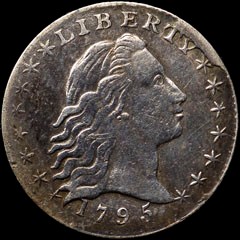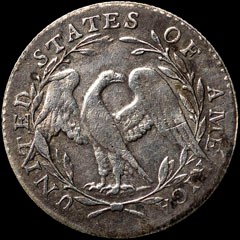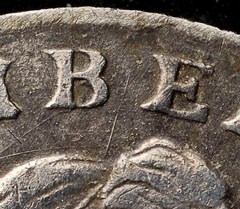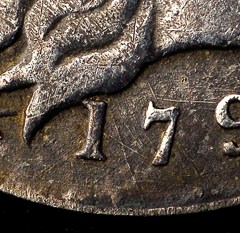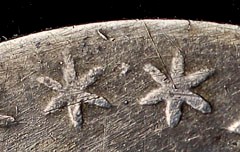Counterfeit Detection: 1795 Half Dime
Posted on 4/16/2013
The minuscule half dime was struck from 1794 to 1873, although many also include the pattern 1792 half disme—the first coin struck under the authority of the Coinage Act of 1792, which established the US Mint and the denominations to be issued. These early half dimes were approximately 16.5 mm in diameter and weighed just 1.35 grams, making them smaller than any US coin save for the silver three cent piece and gold dollar, and lighter than all but the silver three cent piece.
Early half dimes, considered to be those struck from 1794 to 1837, are particularly popular with collectors and a number of varieties have been cataloged by Russel Logan and John McCloskey (attributed by “LM” numbers). The first half dime design was the Flowing Hair type, which was used for only two dates: 1794 and 1795. Both of these years are scarce and highly desirable, although the 1794 is a bit rarer and more valuable than its 1795-dated counterpart.
Counterfeit half dimes are not particularly common, but NGC graders did identify a fake 1795 half dime in a submission several weeks ago. Although counterfeit half dimes of apparent Chinese origin have surfaced in recent years, this piece is likely an older fake. This counterfeiter was more sophisticated than average and must have had a genuine example in hand to copy. In fact, you can even identify the die variety of the copied coin: 1795 LM-10, which features a prominent die cud from the T in LIBERTY to the ninth star.
Because this counterfeit was copied directly from an authentic piece it is more deceptive than most fakes. The design elements are all correctly styled, and a comparison with images of a genuine 1795 half dime would show a number of similarities. Nonetheless, a close inspection of this coin under a loupe reveals several important flaws.
Perhaps the most obvious issue is the raised lines around the BE in LIBERTY and the 17 in the date. These raised lines do not look anything like die polish and are a common characteristic of fakes. Another diagnostic seen on many fakes are raised lumps in the fields, and one can be seen between stars 7 and 8. On the reverse, the letters in the word STATES have clearly been tooled and there are numerous raised lines in the surrounding fields.
This type of counterfeit is the most difficult to detect. Not only was it copied directly from a legitimate inspection, but it was also made of silver and artificially toned by the counterfeiter so that it resembles an authentic piece. Many counterfeits, however, are identified by the same diagnostic flaws such as raised lumps and lines or tool marks. These diagnostics are useful to know regardless of what type of coins you collect.
Be sure to check out NGC’s Counterfeit Detection column published monthly in the American Numismatic Association’s The Numismatist.
Stay Informed
Want news like this delivered to your inbox once a month? Subscribe to the free NGC eNewsletter today!
